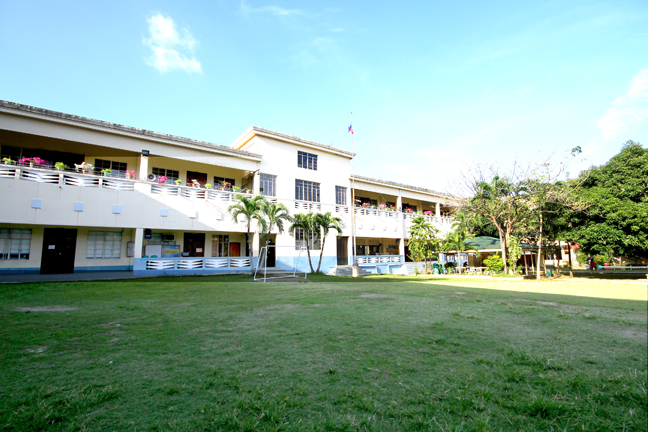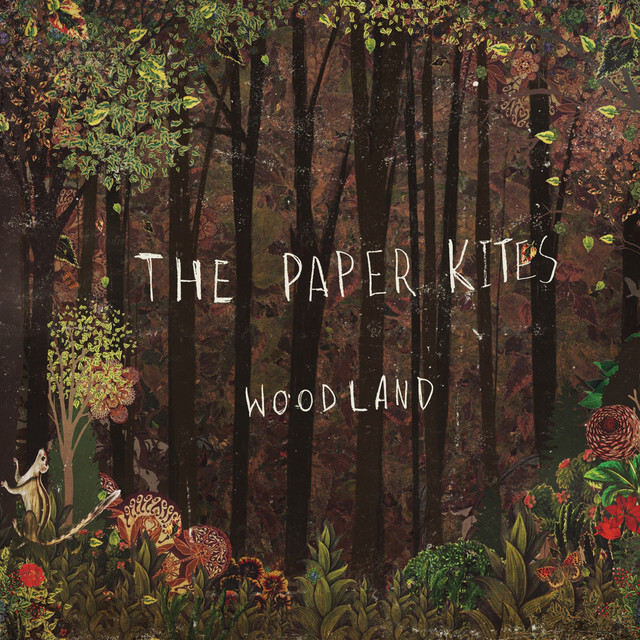CHANCE FOR CHANGE
By Dairell Alvarico and Wei YiChang
Hosted by Dairell Alvarico
Official Transcript:
[THEME SONG – KOLBY THOMPSON.]
Dairell Alvarico: Good to see you all, and welcome to another episode of Sheyenne Perspectives. For this episode, I will be sharing the fun talks I had with Wei YiChang, a fellow journalist for The Mustang Post. As immigrants, we find a lot of similarities of what we experienced and what we aren’t used to when we first moved here.
Wei YiChang: Immigration is a difficult choice because the future is unknown, and we need to face a different culture, use different languages to have a conversation, everything is hard for me. There are a lot of differences between China and United States . I would like to talk about the differences between them.
Dairell Alvarico: Welcome to Sheyenne Perspectives from Mustang Post News, I’m Dairell Alvarico.
Dairell Alvarico: So how is like going to school in China?
Wei YiChang: The high school students go to school at 7a.m and go back to their home at 11 p.m. So that’s a long time, high school students stay in school sixteen each day, sixteen hours each day.
Dairell Alvarico: And what are the breaks for that?
Wei YiChang: What break?
Dairell Alvarico: So, wait, so you stay in school sixteen hours a day and you don’t have any breaks?
Wei YiChang: Actually, we have like thirty minutes to have lunch and dinner and no more.
Dairell Alvarico: Just for lunch and dinner?
Wei YiChang: Yes.
Dairell Alvarico: So, you saying you still stay in school for dinner?
Wei YiChang: Yes.
Dairell Alvarico: Your entire life is basically school, just school, just like that.
Wei YiChang: Yes, yes, we are, that’s so crazy.

Dairell Alvarico: So, if like that’s your school life. Mine more like, so we wake up on 4 to 5 A. M. in the morning, because the class starts at 7:00 A.M. and in the Philippines we don’t have hot water, if you have hot water, you are rich.
Middle class, even lower middle class, you buy a house, you buy an apartment, there is no hot water, so everything is just warm or cold, based how cold the day is, or how hot the day is.
Every school in Philippines we have to wear a uniform, even it is a public school, there are public schools in the Philippines but they still have uniforms for that.
Wei YiChang: Oh yeah, same
Dairell Alvarico: Yeah, same?
Wei YiChang: Same. Public school is kind of for everyone you can go, but you also need pay.
Dairell Alvarico: But what is the difference between private schools and public schools?
Wei YiChang: Private school is more expensive, just more expensive.
Dairell Alvarico: Is that the difference?
Wei YiChang: Yeah, I think that is the only difference, so in China we just pay for it.
Dairell Alvarico: You just pay for everything in China?
Wei YiChang: Yeah.
Dairell Alvarico: If you have to have like an estimate how much school in China?
Wei YiChang: Maybe 6000, it’s like, like- a 1000.
Dairell Alvarico: 1,000 US dollars?
Wei YiChang: Yeah.
Dairell Alvarico: But again, it’s expensive if you had to use that in China?
Wei YiChang: Mmm yeah.
Dairell Alvarico: So for my school, it was like 60k pesos.
Wei YiChang: Sixty?
Dairell Alvarico: Sixty like sixty thousand or seventy thousand each student. Each student for a whole year. But they don’t even don’t have air-con, they don’t have any air conditioning it’s only for like preschoolers and the seniors, if we wanted air conditioning, we have to go to the library, but that’s only during break.

Wei YiChang: But that’s really good you guys have a library.
Dairell Alvarico: Yeah, we have a library.
Wei YiChang: We don’t, we don’t have, we don’t have a library.
Dairell Alvarico: What do you mean you don’t have a library?
Wei YiChang: Cause we don’t have library in our school.
Dairell Alvarico: But like, what if you need books?
Wei YiChang: Um yeah, but our teacher will give us book, and if you want to read some novels or something like that, you can’t have it.
Dairell Alvarico: But what if you lose a book?
Wei YiChang: Why you will lose a book? You use it all the time, all day.
Dairell Alvarico: Wait, to be fair you do stay there most of the day. Where would you-
Wei YiChang: We stay in class most all the day, why there have someone to take your book? Why you will lose it?
Dairell Alvarico: I arrived here January of 2021, right in the middle of winter.
Wei YiChang: 2021?
Dairell Alvarico: Yeah, 2021
Wei YiChang: I arrive here at January 22, in-
Dairell Alvarico: January 2022?
Wei YiChang: I think so.
Dairell Alvarico: Yeah, I come here in the middle of winter and I think that was the worst timing for that, because we only have one season in the Philippines, and that’s summer.
Here is the one thing that I hated myself for, because before we moved to America, my favorite season was winter, because I romanticized winter so bad.
Wei YiChang: You are same like me, cause the city I live, we don’t have like any snow.
Dairell Alvarico: Like no snow?
Wei YiChang: No snow. So, I really want play snow, I want build a snowman or something like that.
Dairell Alvarico: Oh my god, I did that, I want to build a snowman and snowball fight, its because like people kept saying that when they go to a country with like snow, They’re like oh my god, dude you make a snowman.
Wei YiChang: Yeah!
Dairell Alvarico: Snow angels, snowballs.
Wei YiChang: Yeah, so interesting.
Dairell Alvarico: Yeah, it’s like so interesting, like it sounded so fun.
Wei YiChang: I just feel excited, cause my dad says is very cold here, I was just excited they have snow, I can build a snowman. I was so excited. But now, do you like snow now?
Dairell Alvarico: God, no, oh my god, no.
Wei YiChang: Same.
Dairell Alvarico: We’ve lived here for so long.
Wei YiChang: Yeah, so I really don’t like the snow and winter.
Dairell Alvarico: Oh wait, for you what’s like a culture shock when you first moved here from China?
Wei YiChang: Culture shock?
Dairell Alvarico: Yeah.
Wei YiChang: I don’t really know it, because I didn’t talk to lot other peoples, so I don’t really understand the culture shock.
Dairell Alvarico: I guess, maybe even like the tiny things-
Wei YiChang: I’m really afraid I will make some mistakes, so I just don’t talk.
Dairell Alvarico: You can say one thing I’ve noticed is that, um people here are more social.
Wei YiChang: Oh yeah.
Dairell Alvarico: They’re more comfortable talking to strangers, is that same for you?
Wei YiChang: I think so.
Dairell Alvarico: Like how so?
Wei YiChang: Cause I don’t really talk, but over here their have lot of people want to talk to me.
Dairell Alvarico: Yeah that makes sense, because going past a stranger here and you’re like, “Good morning”
Wei YiChang: Oh, yeah.
Dairell Alvarico: “Hello”
Wei YiChang: “How are you?”
Dairell Alvarico: Do that in Philippines they think you’re weird, because nobody talks to anyone. You’re walking, go on your own way, mind your own business, no one says “good mooring”.
Wei YiChang: Yeah, no one will talk to you.
Dairell Alvarico: No one will talk to you, but in America –
Wei YiChang: They will,
Dairell Alvarico: They will. I like it in a way because-
Wei YiChang: I will just feel weird, cause if someone will talk to you, maybe they want something from you, but what they want? I don’t know it. In China if someone talk to me, like “good morning.” I will like oh my goodness, what happened? what things will happen next?
Dairell Alvarico: Someone does that here it’s like casual, you know? “good morning”, “Hello”.
Wei YiChang: Yeah, it’s very normal here,
Dairell Alvarico: Yes, they’re better at talking to strangers.
Dairell Alvarico: And also, fun fact… gas stations here, in the Philippines we have gas stations, but you don’t go out to pump you own gas.
Wei YiChang: What does that mean?
Dairell Alvarico: There always has somebody who will do it for you, I forgot, it’s actually a job.
Wei YiChang: Oh, I see, we are the same.
Dairell Alvarico: Same right? You tell them how many gallons you want or something-
Wei YiChang: They will help you.
Dairell Alvarico: Then you pay them, and they’ll do it for you.
Wei YiChang: Will you guys give some tips? We don’t, we are never.
Dairell Alvarico: There’s no tips?
Wei YiChang: No.
Dairell Alvarico: Wait, to be fair we don’t have tips either. We never tip. Literally never tip. But in here you tip, in the Philippines you pay, you leave.
Wei YiChang: Yeah, just pay and leave. That’s ok.
Dairell Alvarico: Pay leave, but here you got to tip, but for like the gas station, we just pay the guy to fill it up for us, and we leave, so you imagine the difficulty of going in here and we have to gas up and we look at it and we’re like what the hell of post to do. Because for the entirety of my life, I have never gotten out to gas up my own car. It was until I had to come here and we had to do it ourselves.
Wei YiChang: I’m really lucky, beacuse my dad stay here for six years.
Dairell Alvarico: Oh, at least your dad knew some stuff. For me it was our whole, our entire family came here and we didn’t know anything so…that was bad in itself.
Wei YiChang: I think I more like the Chinese food in China, but I guess I prefer to study in United States because, here there’s more freedom. I like here more and the language is still hard for me so..
Dairell Alvarico: Yeah, there’s so many barriers. If there’s any type of advice I would give to someone, it would be have patience, it’s a whole new country, you’re not familiar with anything, you were raised with different morals, different information and anything that makes you different from the people who lived in the United States their whole lives.
So, at some point it is inevitable that you’re going to see or expereince something that you have no knowledge of and that’s okay. Youre going to adjust, you’re going to adjust as you continue to live in the U.S and that’s the process.
Wei YiChang: I think they don’t need afraid of too much things because, if theyre really come here they will know here’s really free for them, they can do many things they want, so don’t be afraid too much.
Dairell Alvarico:You have so many things to discover, so many things to know, it’s the United States so you can say I’m pretty glad I moved here. Would you say the same thing?
Wei YiChang: Same, me too, yeah.
Dairell Alvarico: Yeah, because we get to expereince things we’ve never seen in our own countries, and that’s a good thing. We’re expanding our knowledge.
Wei YiChang: I think, if they come to study in United States, they will be really relaxed because you have more freedom, you don’t need to spend lot of time in school. More time to do my, do artwork because I had no time to make in China. and what a change…change!
Dairell Alvarico: I do have to say, change can be a good thing.
Wei YiChang: Yes, yes change is good thing.
Dairell Alvarico: It’s just, you know pretty bad at the start. Immigration can be just like that, all you gotta do is guide it to the right direction and you’re going to have more opportunities, you’re gonna learn new things and you’re going to-
Wei YiChang: More chance
Dairell Alvarico: Yeah, you’re gonna develop more as a person. And, that’s nice to think about.
[THEME SONG – KOLBY THOMPSON.]
Dairell Alvarico: This podcast was recorded and edited by Dairell Alvarico.
Wei YiChang: And Wei YiChang
Sheyenne Perspectives theme music was composed and performed by Kolby Thompson under the direction of Mark Berntson.
Dairell Alvarico: Thank you so much, Sunny. I enjoyed the time and effort you made into making this podcast with me.
Wei YiChang: Thank you, I really the casual talk with you.
So long, everyone. We hope to see you on the next episode of Sheyenne Perspectives.
Dairell Alvarico: This has been a production of Mustang Post News.




















